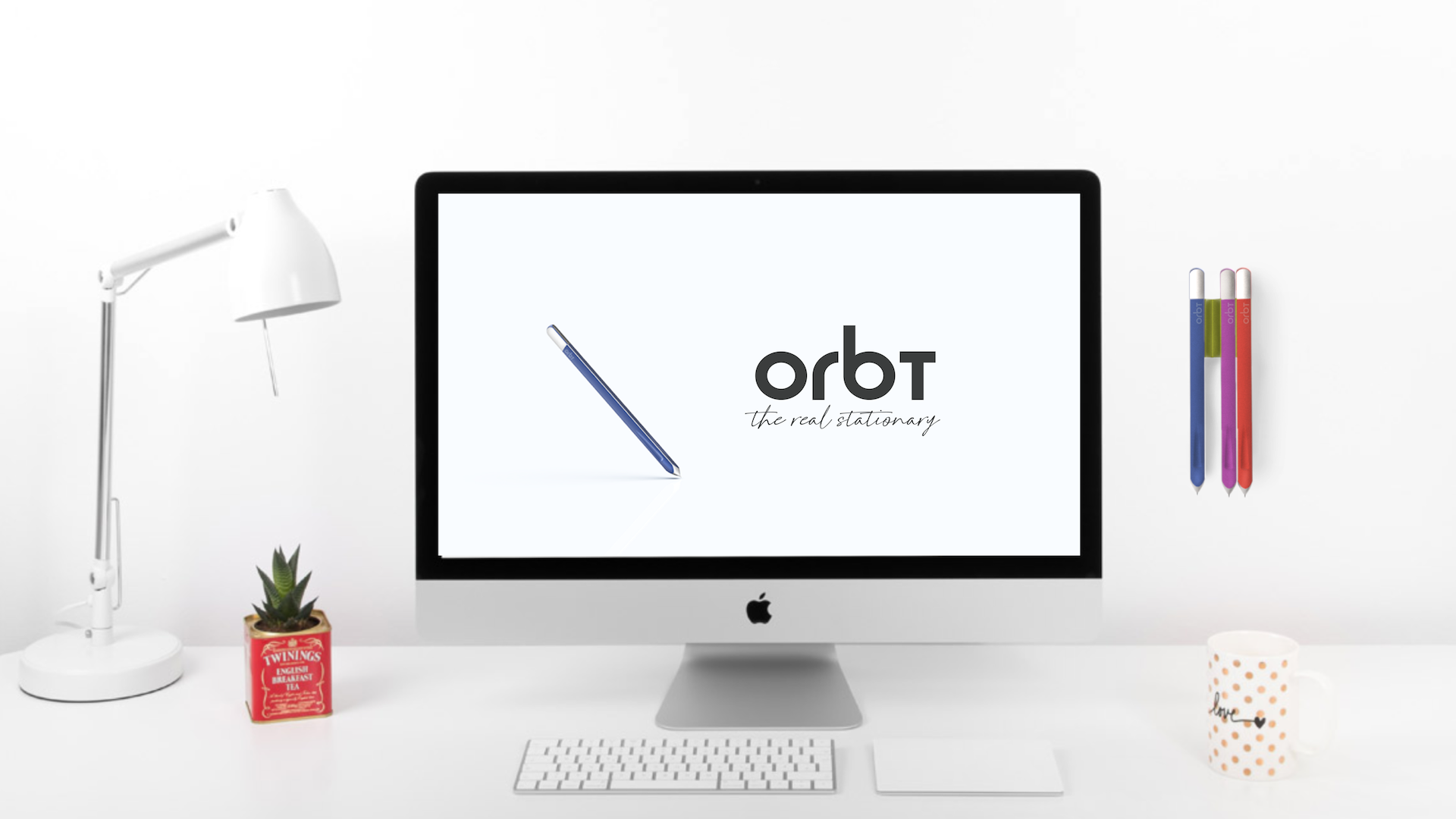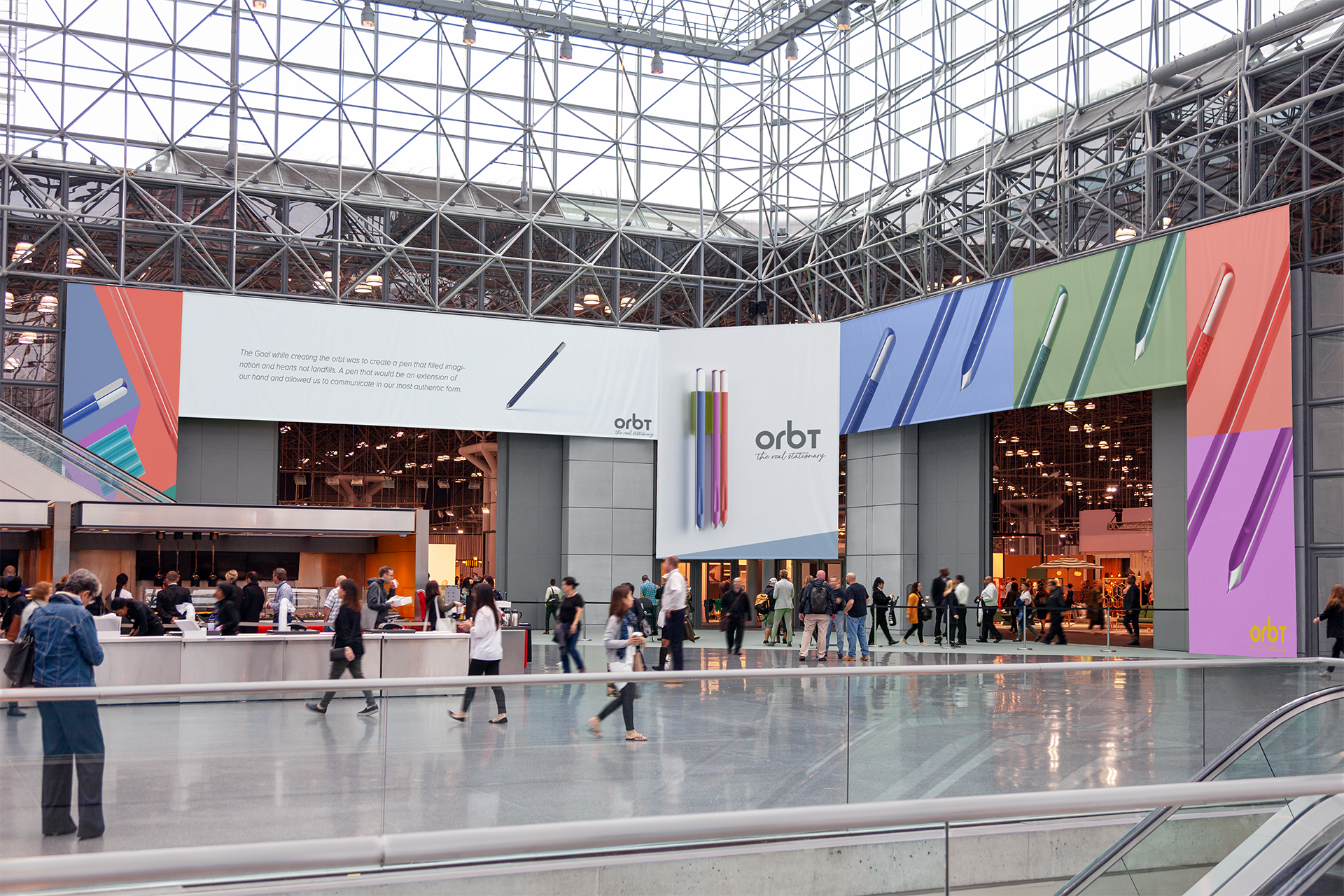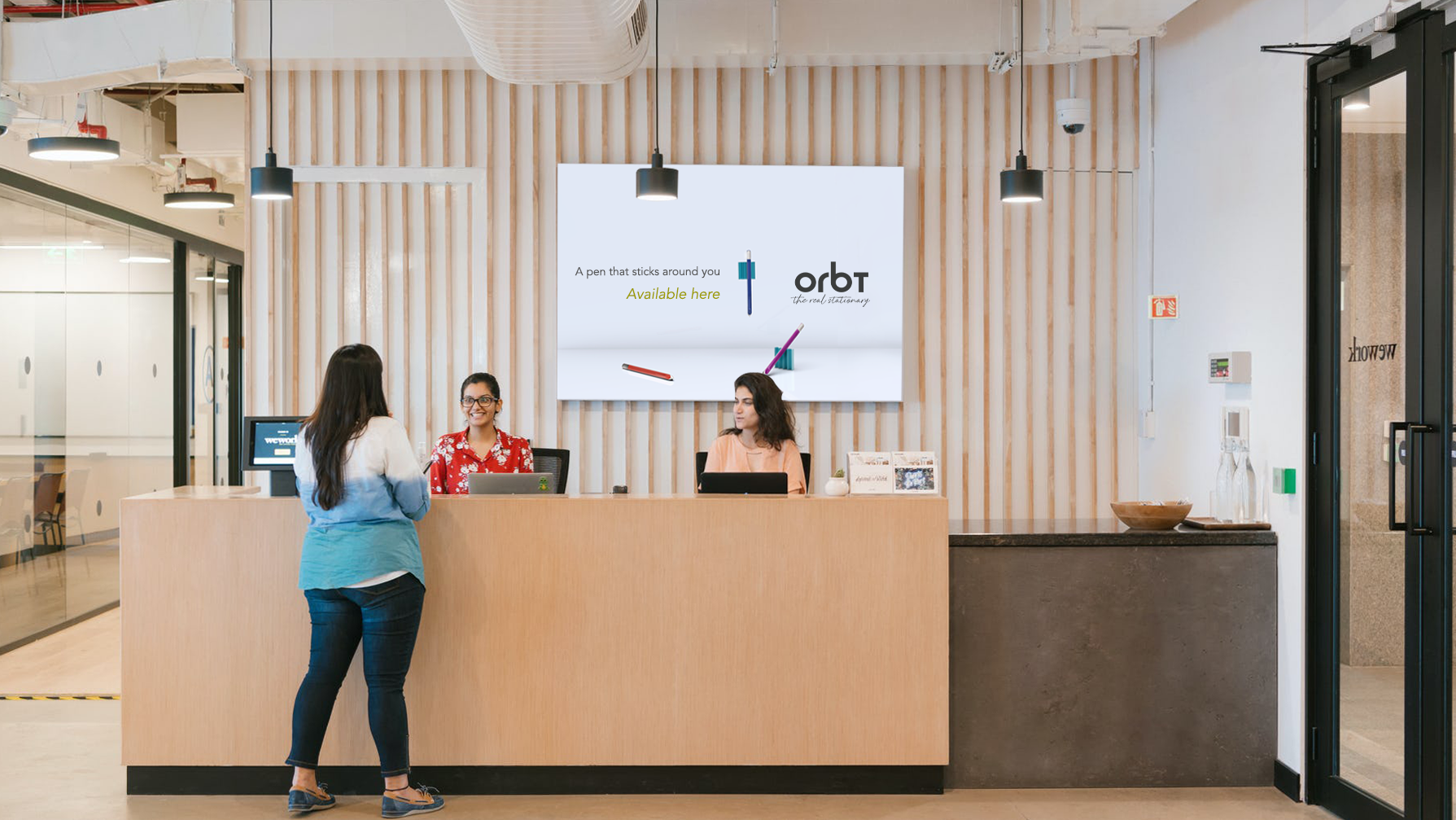Orbt: The Ballpoint Pen Designed to Stay Around for Years
“Our mission is to make writing instruments
that are as beautiful and elegant as the ideas they help express.
At the same time, we aim to create a product lifecycle that is mindful of both the consumer experience and its environmental impact.”
Orbt is a set of convenient writing instruments, specifically ballpoint pens, that minimize their environmental impact by avoiding single-use plastic and promoting reusability. Inspired by the geostationary orbits revolving around the earth, Orbt is designed to, quite literally, stay around the user for years. The iconic Reuleaux Triangle shape of the stylus and its magnetic stand’s matching profile nudge the user to place the pen back in its home, preventing misplacement, use after use.
Orbt was designed by Crystal Ching Yi Lo, Yufeng Peng & Karan Bansal, during the Product, Brand, and Experience course taught by Hlynur Atlasson. The project brief was to identify particularly wasteful products—either due to scale or frequency of use—and reimagine how a different product could fulfill that need more intentionally. The team looked to products they used every day and determined that the ubiquitous ballpoint pen was one of the most prevalently used and wasted products. “Our mission was to make writing instruments that are as beautiful and elegant as the ideas they help express, while at the same time creating a product lifecycle that is mindful of both the consumer experience and its environmental impact.”
According to the team’s research, an average person owns 28 pens at any given time. In comparison, one only really needs an estimated 4.3 writing implements a year. “We believe that by designing a pen that offers the best writing experience and communicates a clear sense of ownership, we will make it more personal and inherently less likely to end up in the trash,” Yufeng shares of Orbt’s mission. “To realize this, we designed the pen to be stationary—not portable like most pens are. This meant going away from the industry trend of offering 2 typologies, caps and retractable mechanisms intended for the pocket.” In fact, the extra long design of the pen body discourages pocket use.
Each year approximately 1.6 billion pens are sent to the landfill—and that’s in the United States alone. The size and the number of pen components (cap, ink cartridge, spring, barrel, etc.) make it difficult for them to be properly recycled. Moreover, their expendable nature does not promote reuse.
Each year approximately 1.6 billion pens are sent to the landfill
…and that’s in the United States alone.
Looking at pens as a systemic problem, Orbt challenges the pen industry conventions by designing primarily for organizations rather than individuals. By strategically removing the cap and retracting mechanism and providing a permanent home for the pen, Orbt communicates positional ownership. “We explored various forms and material finishes to make the product feel premium, evoking a connection with the user, and communicating non-disposability,” explains Crystal.
The Orbt design team went through over twenty different iterations of the pen’s form and function. “We accounted for the ergonomics of writing and the affordances communicated by the resulting form,” Karan explains of the process. “We needed to communicate an obvious connection between the pen and the stand-cum-organizer.” To design for manufacturability, the team 3D modeled all iterations in Shapr3D and then explored the various materials, finishes, and colors in Keyshot. Take a look at some of the Orbt’s early prototype renderings here:
Orbt’s research methodology was primarily focused on studying existing designs, distribution networks, and business models. They also created comprehensive system maps of the various stakeholders and modeled the flow of the pen. In addition, the team created a consistent brand profile, including an ad campaign.









